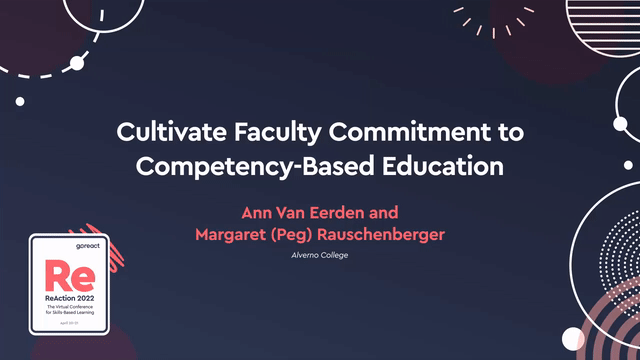So that’s a whole lot in a short amount of time. But one of the tasks we have as we make this shift to CBE, or Competency-Based based Education, and assessment, how do we get everybody on board to commit? It sounds like it’s huge.
But if you really take a look at your curriculum and all the things that are happening in all your courses, I think it is less daunting than it sounds. You are already doing much of this.
But we, as a corporate faculty at each of our institutions, need to come together and have conversations about this. And that is part of the reason why CCNE has given people until 2024 to implement the new essentials. Even if you’re not a CCNE accredited, you still might want to work toward having students actually perform and show that they can do something with what they know. So what does it take?
You need to encourage a lot of dialogue and debate. There will be emotional responses. Because faculty will see that this does take a significant amount of work to create, especially, the learning experiences and the assessments. But once you do, there is a huge return on investment. And that’s what you need to explore together as a corporate faculty.
You will have clear data that will demonstrate how well your students are meeting your overall program outcomes. This data is so much more in depth than just exam scores. But faculty also need to be involved in creating the processes and products. You can’t just say this is what we’re doing and go do it.
You need to create the time– and that’s the next to last bullet point– create the time to do the work. Even though Alverno has been doing a competency-based education since the ’70s, we are now taking a look specifically at the new essentials to make sure the competencies and subcompentencies are embedded in our curriculum.
So as leaders– Ann and I and the dean have created days– and it’s not just an hour here and there. We have whole mornings plotted out for doing this work together. So you have to– faculty are overworked.
Our faculty work hard. So we need to create the time to do the work. And we need to keep checking in with each other for continued support. And as leaders, we need to be very clear about the desired outcomes.
This goes back to the outcomes that Ann talked about for the students. We need outcomes for ourselves. What are we trying to accomplish doing this? And I’m not going to get into it. But there will also be work you need to do to get students on board.
Again, they need to see the value of the amount of work they’re going to have to do to demonstrate their learning. Once they do, and then they can feel more confident in the clinical arena, It’s usually a good thing. But we have a lot of work to get all of us to commit to competency-based education.





